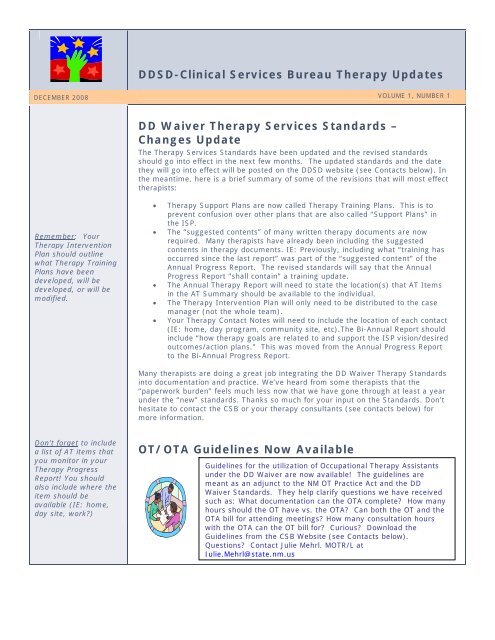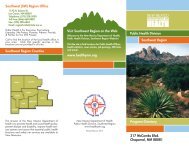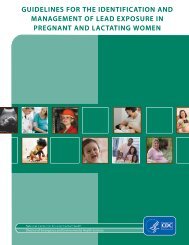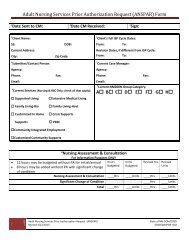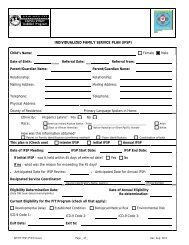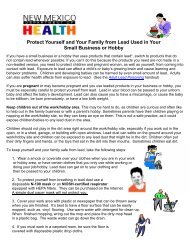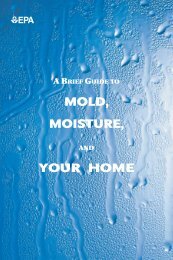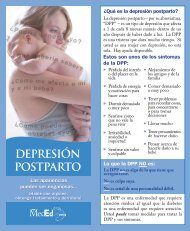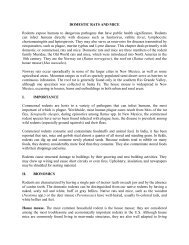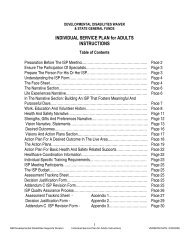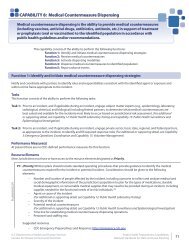DDSD-Clinical Services Bureau Therapy Updates DD Waiver ...
DDSD-Clinical Services Bureau Therapy Updates DD Waiver ...
DDSD-Clinical Services Bureau Therapy Updates DD Waiver ...
Create successful ePaper yourself
Turn your PDF publications into a flip-book with our unique Google optimized e-Paper software.
<strong>Clinical</strong> Exceptions NewsPlease use the new <strong>Clinical</strong> Exception Request Form attached to this e-mail from thispoint forward. The new form has been developed to make it easier to submit for<strong>Clinical</strong> Exception Units when the therapist is working with an individual who is onthe Statewide Aspiration Risk List (SARL) and the therapist’s Intervention Planincludes activities that address the individual’s aspiration risk. You will no longerhave to submit a justification or a <strong>Therapy</strong> Progress Report for these individual’s!<strong><strong>DD</strong>SD</strong><strong>Clinical</strong> <strong>Services</strong><strong>Bureau</strong>5301 Central Ave NESuite 1700Albuquerque, NM87108Phone: 841.2948Fax: 841-2987We’re on the Web!www.nmhealth.org/ddsdUse <strong>Clinical</strong> <strong>Services</strong><strong>Bureau</strong> Link fromthis page.AspirationPneumonia hasbeen the leadingor second mostcommon causeof death forpersons with <strong>DD</strong>in NM since1998.The <strong>Clinical</strong> Exception Process has been going “exceptionally” well! We have reallyenjoyed seeing some the effective and creative therapy intervention approacheshappening all around the state. Please remember that you can submit <strong>Clinical</strong>Exceptions at any time throughout the ISP budget year. You should submit <strong>Clinical</strong>Exceptions at least 8 weeks before you anticipate using the <strong>Clinical</strong> Exception hours.Unique AT SolutionsThe CSB Website has a newer addition called “Unique AT Solutions”. This area wascreated to provide therapists and teams a means of sharing creative AT Solutionsused by individuals with <strong>DD</strong> in NM. This site provides a way for you to see whatother therapists and team members are doing in AT around the state. We also hopethat you will take the time to submit unique AT Solutions that you have developed!We plan to present AT Solutions Awards to individuals and agencies who submit themost useful and creative AT Solutions. So take a picture of your solution with yourcamera or cell phone. Explore unique AT solutions submitted by others on the CSBWebsite. Above all, spread the word, win that award, and submit your solutionstoday! It’s fast and easy to do. Get the submission form and all the info.at thewebsite.This Issue’s“<strong>Clinical</strong> Takes”information isreprinted from:American Speech-Language-HearingAssociation. (2001).Roles of Speech-LanguagePathologists inSwallowing andFeeding Disorders:Technical Report[Technical Report].Available fromwww.asha.org/policy.<strong>Clinical</strong> Takes – Developmental Disabilities andDysphagiaDevelopmental disability (<strong>DD</strong>) refers to a cluster of lifelong, handicapping conditionswith congenital or pediatric onset that are of sufficient severity to warrantextraordinary medical, therapeutic, and/or residential supports. The disability mayinclude cognitive, psychiatric, neurological, gastrointestinal, cardiorespiratory,orthopedic, sensory (e.g., visual and otological) and maxillofacial disorders (Rubin &Crocker, 1989). Etiologies are varied and may result from genetic abnormalities,traumatic events, and disease.The prevalence of dysphagia and feeding disorders is higher in developmentaldisability than in the normal population and varies widely by etiology, by theseverity and multiplicity of involvements and by the age of the population (Rogers etal., 1994; Sheppard, Liou, Hochman, Laroia, & Langlois, 1988). Individuals with <strong>DD</strong> are uniqueamong those with dysphagia and feeding disorders in that their developmental,pediatric disorders are often retained into adulthood. These persisting problems maybe complicated by adult-onset disorders that degrade swallowing, by the deleteriouseffects of aging on the physiological capabilities for feeding and swallowing, and bythe side effects of the long-term and complex medical regimens that may berequired to treat coincidental disorders.
<strong>Clinical</strong><strong>Services</strong><strong>Bureau</strong><strong>Therapy</strong>Consultants-ContactInformationLourie SmithPohl, Ed.S, CCC-SLPPh.505.841.5254Lourie.Pohl@state.nm.usContact Louriefor: TechnicalAssistance, AACLoan Bank, AACEvaluations.Fran Dorman,PT, MHSPh.505.841.5224Fran.Dorman@state.nm.usContact Fran for:TechnicalAssistance,Seating andPositioninginformation.Julie Mehrl, MOT,OTR/LPh.505.841.5341Julie.Mehrl@state.nm.usContact Julie for:TechnicalAssistance, Env.Access LoanBank, Env.AccessEvaluationsThe progressive nature of oral-pharyngeal dysphagia in this population wasdemonstrated in retrospective data obtained from 75 individuals with developmentaldisabilities over a 15-year period (Sheppard, 1998). In this study, the proportion ofindividuals with evidence of oral pharyngeal dysphagia increased from 35% to 100%at the beginning and end of the study, respectively.The dysphagia and feeding disorders that are seen in adults with developmentaldisability include poorly developed and absent feeding and oral preparation skills andcompetencies, physiological and anatomical impairments that degrade oralpharyngealand esophageal bolus motility, and disruptive or maladaptive mealtimebehaviors. Nutrition, hydration, saliva management, ingestion of medications, andmanagement of the oral hygiene bolus may be involved. Upper airway obstruction(choking), aspiration, malnutrition, and dehydration may result from the disorder(Rogers et al., 1994, Sheppard et al., 1988). Significant interactions have been noted betweendisordered feeding skills and survival in children and adults with severe <strong>DD</strong> (Eyman,Grossman, Tarjan, & Miller, 1987; Eyman, Grossman, Chaney & Call, 1990). Intervention may bewarranted intermittently throughout life, as changes in the disorder occur.Rubin, I. L., & Crocker, A. C. (Eds.). (1989). Developmental disabilities, delivery ofmedical care for children and adults. Philadelphia: Lea & Febiger.Rogers, B., Stratton, P., Msall, M., Andres, M., Champlain, M. K., Koerner, P., &Piazza, J. (1994). Long-term morbidity and management strategies of trachealaspiration in adults with severe developmental disabilities. American Journal onMental Retardation, 98, 490-498.Sheppard, J. J., Liou, J., Hochman, R., Laroia, S., & Langlois, M. (1988). Nutritionalcorrelates of dysphagia in individuals institutionalized with mental retardation.Dysphagia, 3, 85-89.Sheppard, J. J. The natural history of dysphagia in developmental disability. 1998.Paper presented at the Dysphagia Research Society. Seventh Annual InternationalMeeting. New Orleans, LA.Eyman, R. K., Grossman, H. J., Tarjan, G., & Miller, C. R. (1987). Life expectancyand mental retardation, A longitudinal study in a state residential facility.Monographs of the American Association on Mental Deficiency, 7.Eyman, R. K., Grossman, H. J., Chaney, R. H., & Call, T. L. (1990). The lifeexpectancy of profoundly handicapped people with mental retardation. New EnglandJournal of Medicine, 323, 584-589.


